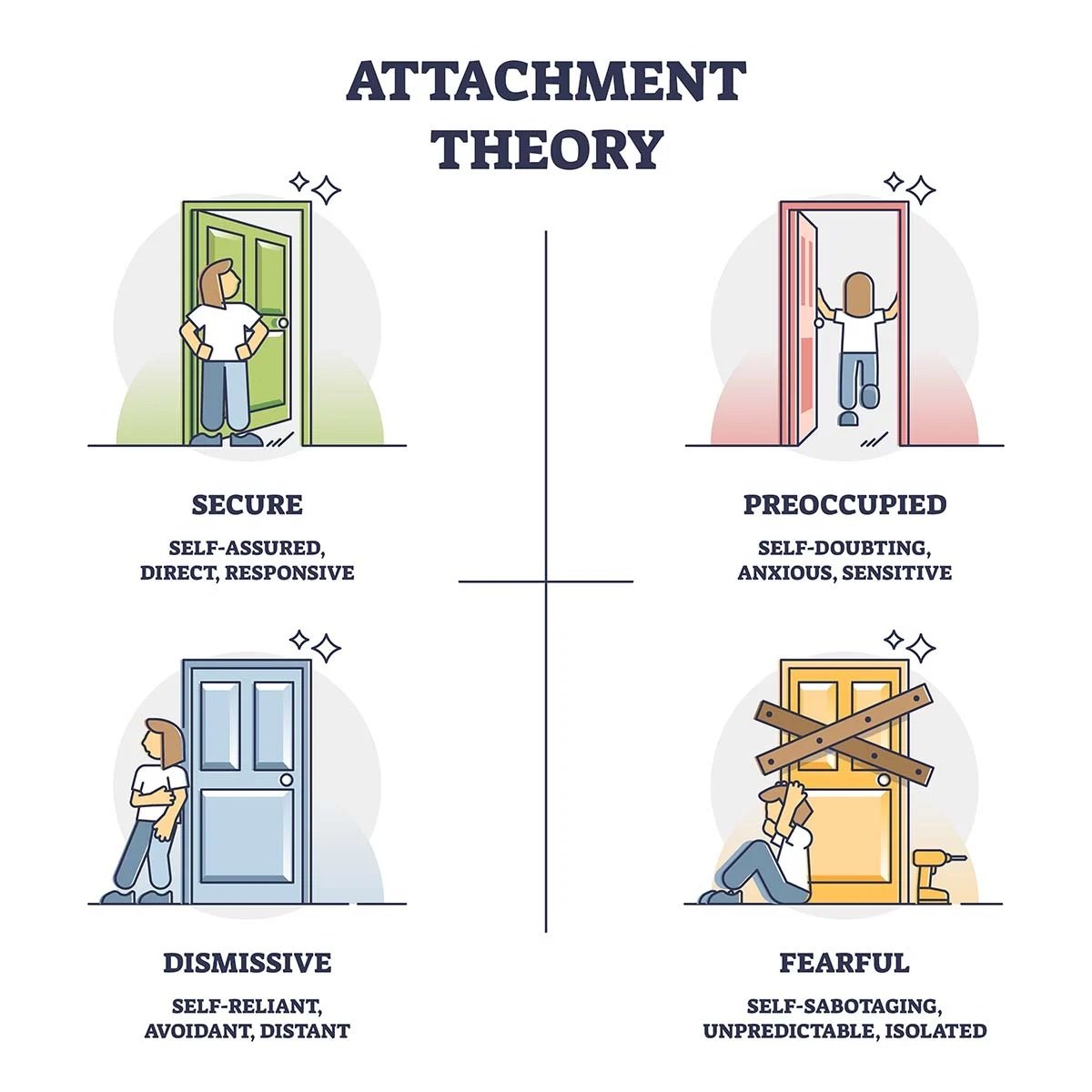

Let’s briefly go over all four attachment styles.
Secure
Secure attachment in the infant–caregiver bond develops largely as a function of consistent maternal responsiveness and contingent matching.
In general a person with a secure attachment style is comfortable with closeness, their able to depend on others, and also able to ask for help. Furthermore, secure individuals are not worried about being abandoned or unloved.
Dismissing or Avoidant
Dismissing attachment in adults is largely the outcome of consistent rejection of the child’s bids for attention, usually by the primary attachment figure which is often the mother. Such rejection results in deactivation of the attachment system.
One ought to note it needn’t be intentional. For example, a mother may have to work 15 hrs a day to support the family, or perhaps the child had to go into childcare. This mother can certainly be admired, and she herself did nothing wrong. However, the child can’t make sense of that, all the child knows is that he or she wants their mother and their mother isn’t around. The child makes bids for attention and care again and again and no-one comes to soothe them. Eventually, the child just gives up. The child stops expecting anyone to meet its needs. The child must learn to regulate itself on its own.
When the child grows up, the adult will have all these basic expectations – that no-one will meet his or her needs, that they cannot count on anyone, and the adult will develop a fierce independence so that he or she need never depend on anyone and suffer the pain of that disappointment and sense of helpless abandonment they felt as an infant.
People that are Avoidant are usually very independent, with a strong sense of self. They rarely seek out help. Often they see others as an intrusion in their lives, or even a burden. They have few childhood memories and rarely express emotions. They idealize their parents, usually minimizing any negative behavior or hurtful memories. They do not show vulnerability. In relationships they never worry about being abandoned. They may even say they don’t need love or a relationship. Yet, beneath it all, there is a longing for connection, if their attachment system can be activated.
Anxious-preoccupied
This attachment style is usually the outcome of a prolonged pattern of inconsistency of responsiveness from the attachment figure and of over-involving the child in the caregiver’s state of mind. Such experience produces hyper-activation of the infant’s attachment system.
The parents tend to be inconsistently responsive to their infant’s needs, sometimes their unavailable, and at other times intrusive. The parents can be overprotective and interfering.
Because the infant never knows what to expect, it causes hyper-activating strategies in order to elicit care and support. The child becomes hyper vigilant to the parents moods, becoming enmeshed in the parents mental states, to the point that the child loses touch with their own self-state. Hence anxious preoccupied individuals have a poorly developed sense of self.
In many ways, preoccupied anxious individuals are the opposite of avoidant individuals. They tend to be clingy and overly involved in the other person. They are often co-dependent, acquiescing to the others needs and ignoring their own. They look to other person to see what is expected of them, developing an outward-in orientation, acting to please the other person instead of acting from their own inner self.
They can be very verbal, rambling, with long run on sentences that never get to the point.
They are hyper vigilant to signs of rejection and have a high fear of abandonment. They are very sensitive and need constant reassurance. They are often needy, constantly vying for attention.
The anxious preoccupied often tend to get into relationships with avoidant individuals, which can be particulate toxic as each triggers the defense mechanisms of the other. The preoccupied person becomes alarmed at the coldness of the avoidant, which triggers her attachment system into overdrive to demand excessive attention, which then triggers the avoidant to shut down even more to avoid intimacy. This kind of relationship is all too common and can be difficult for each person to extricate themselves from.
Disorganized or Fearful
Disorganized attachment is the outcome of frightening parental behavior and unresolved trauma or loss in a parent. This is sometimes called “fear without solution” since the source of the infants attachment is also the source of their fear. Disorganized adults have a mix of both anxious-preoccupied and dismissive avoidant attachment styles. They switch between the two. Disorganized individuals often have low mental coherence, they can suffer from disassociation, have violent mood swings. Many disorganized individuals also have some elements of border line personality disorder. They are deeply mistrustful of people, and hence the toughest attachment style to heal.
